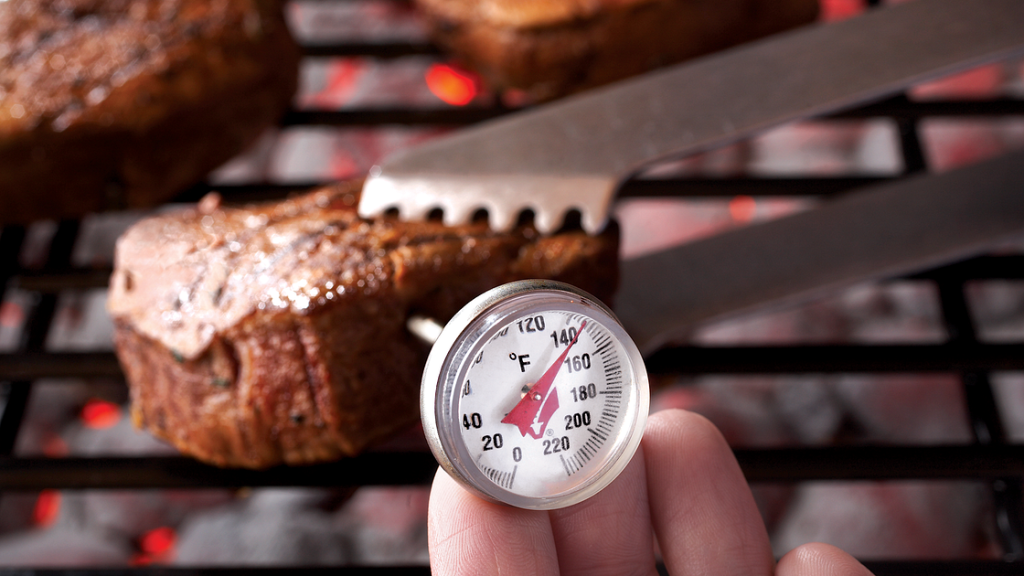Steak aficionados know that the level of doneness significantly impacts the flavor, texture, and overall dining experience. Deciding on the perfect steak doneness at a restaurant can be a subjective but crucial choice. This guide aims to demystify the various levels of steak doneness and provide insights into making informed decisions when ordering your favorite cut.
Understanding Steak Doneness Levels
Steak doneness refers to the degree to which the meat is cooked. From rare to well-done, each level offers a distinct texture, color, and flavor profile. The common steak doneness levels include rare, medium-rare, medium, medium-well, and well-done, catering to different preferences for juiciness, tenderness, and taste.
Rare
A rare steak is characterized by a cool red center and a tender, juicy texture. It’s cooked very briefly, achieving an internal temperature of around 125°F (51°C). This level of doneness preserves most of the steak’s natural juices and tenderness, with a distinctly red interior.
Medium-Rare
Slightly more cooked than rare, a medium-rare steak maintains a warm red center with a slightly firmer texture. It reaches an internal temperature of about 135°F (57°C). This doneness level retains a balance between tenderness, juiciness, and a slightly more developed flavor.
Medium
A medium steak features a pink center and a firmer texture compared to medium-rare. It cooks to an internal temperature of around 145°F (63°C), offering a more pronounced flavor while retaining some juiciness.
Medium-Well
Stepping closer to well-done, a medium-well steak exhibits a slightly pink center but with considerably reduced juices. It reaches an internal temperature of about 150°F (66°C), offering a firmer texture and less moisture compared to the previous doneness levels.
Well-Done
A well-done steak is fully cooked with no pinkness, reaching an internal temperature of 160°F (71°C) or higher. It has a firm texture, is drier, and tends to have less juiciness compared to other doneness levels, with a more charred exterior.
Factors to Consider When Deciding
Several factors influence your choice of steak doneness. Personal preference is key – whether you prefer a more tender and juicy steak or one that’s cooked through. Additionally, the cut and thickness of the steak, as well as the cooking method employed by the restaurant, can affect the final result. Understanding these factors helps in making an informed decision.
Communicating Your Preference
Effectively communicating your desired steak doneness to the server or chef is crucial. Be clear and specific about the level of doneness you prefer. If uncertain, referencing a temperature range or describing the desired appearance of the steak’s interior can assist in conveying your preference accurately.
Consideration of Cut and Quality
Different cuts of steak vary in fat content, marbling, and tenderness, which can influence how they cook and the ideal level of doneness. For instance, a well-marbled ribeye might retain juiciness better at higher doneness levels compared to a leaner cut like filet mignon. Additionally, higher quality cuts often offer more flexibility in achieving desired doneness without compromising tenderness.
Trial and Error
Experimentation plays a role in determining your preferred steak doneness. Trying different levels of doneness at various restaurants or even at home allows you to discover your personal palate and preferences. Over time, you’ll develop a clearer understanding of the doneness that best suits your taste.
Choosing the ideal steak doneness at a restaurant involves considering personal preferences, communicating effectively, understanding the various levels of doneness, and considering factors such as cut, quality, and cooking method. Armed with this knowledge, you can confidently order your preferred steak, ensuring a delightful dining experience tailored to your taste. Looking for a steakhouse in Canada? Check out Inferno Charcoal Grill.


